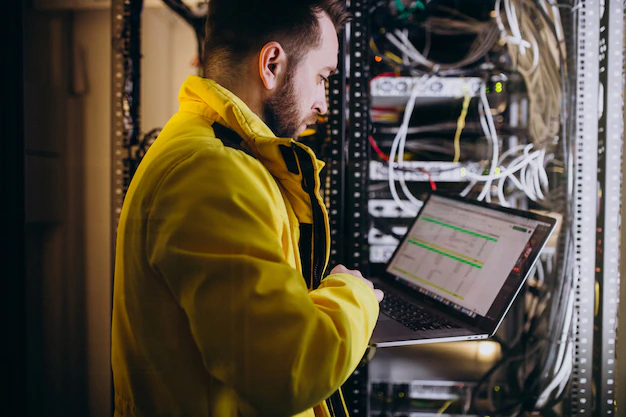A data center is the core of all IT equipment and operations necessary for storing, processing, and distributing data and maintaining data security. And every state-of-the-art data center cannot function without electricity. The ever-unsung hero of the computing world, electricity powers all the smart CPUs, massive amounts of memory, and vast data center storage capacity.
Now, how does power work in a data center? Let’s get into the basics first.
Electricity 101
Two types of voltage or current used in electricity are alternating current (AC) and direct current (DC).
Alternating current
AC is used universally, thanks to Nikola Tesla, who won the electricity war against Thomas Edison. Alternating current allows us to plug in an appliance, and it’s good to go. AC power enables one to access different currents and power, such as 110V, 120V, 208V, 220V, or 240V.
Direct current
Direct current is Thomas Edison’s brainchild. Unlike AC, which runs in different directions, electric charge in DC flows in one direction. We experience direct current when we use batteries in our phones and laptops. DC power is also used in IT gears such as routers and switches.
Ampere (amp)
Every electronic device we own needs a specific number of amps to run. Ampere or amp is the electromagnetic force that acts between two electrical conductors that carry current. In short, it is the amount of electricity that flows through electronic devices – servers and other equipment at a data center, for example.
Voltage (V)
Volts are the power that pushes electricity to an endpoint from a power source. Batteries and power circuits alike use voltage to measure electricity.
Watts (W)
If you want to measure the power your device or server uses, you use watts. So, this goes up as you use the equipment and when it multi-tasks or does complex activities.
How do all these work in a data center?
Data centers may differ in needs. However, every data center needs the following to run smoothly.
- Servers. They do most of the work – storing data and supporting your business.
- Cooling. The equipment generates heat, so electricity also powers cooling facilities that prevent damage and extend the life of the servers and other items.
- Inverters. When the AC power is disrupted, inverters launch power from their storage. These inverters need fuel, too.
- Office. Support staff responsible for looking after the data center need a headquarters to do their jobs.
- Security. This includes alarms and other physical security measures to protect a data center.
Power Usage Effectiveness (PUE)
Measuring your data center’s PUE is crucial for efficiency and cost savings. Power usage effectiveness measures whether the data center’s energy powers the equipment responsible for the actual job and not the ancillary items such as lights, office ACs, and other support items.
How much power does a data center use?
A report shows that the data center industry uses more than 90 billion kilowatt-hours of electricity annually. To put things in perspective, that’s equivalent to more or less 34 coal-powered power plants. Globally, data centers are responsible for 3% of electricity use. Indeed, energy use in data centers is high and continuously growing. And this is because besides the critical items that need to be powered, ancillary equipment – lights, cooling systems, monitors, alarms, humidifiers, etc. – also need power.
Power Outages
Power outages in data centers can bring the operation to a halt, resulting in data loss, corrupted files, and damaged equipment. Here are a few best practices to prevent power outages and ensure that critical data and systems are protected even when the lights go out.
Reliable backup power systems
At the very least, your backup power system must be in the form of uninterruptible power systems (UPS) as they provide enough time for plans to gracefully shut down. Regular checkups, testing, and maintenance are also necessary to ensure that your backup power systems can save you during power outages.
Good cable management
Good cord and wire management is the foundation of every data center. Failure to properly manage a data center’s cabling system can cause severe damage and expensive outages. From the get-go, ensure that cabling installations are organized and designed for anticipated business needs and growth.
Business continuity plan
It is essential to have a disaster recovery plan in place. This outlines the roles that teams and individuals play if an outage occurs. It also includes programs once power is restored – recalibration and testing to check whether everything is working as expected.
Business interruption insurance
A good risk management practice is to get business interruption insurance. Talk to your business insurance provider about how you can be covered if power outages result in lost revenues, rent payments, employee wages, and other overhead costs.















